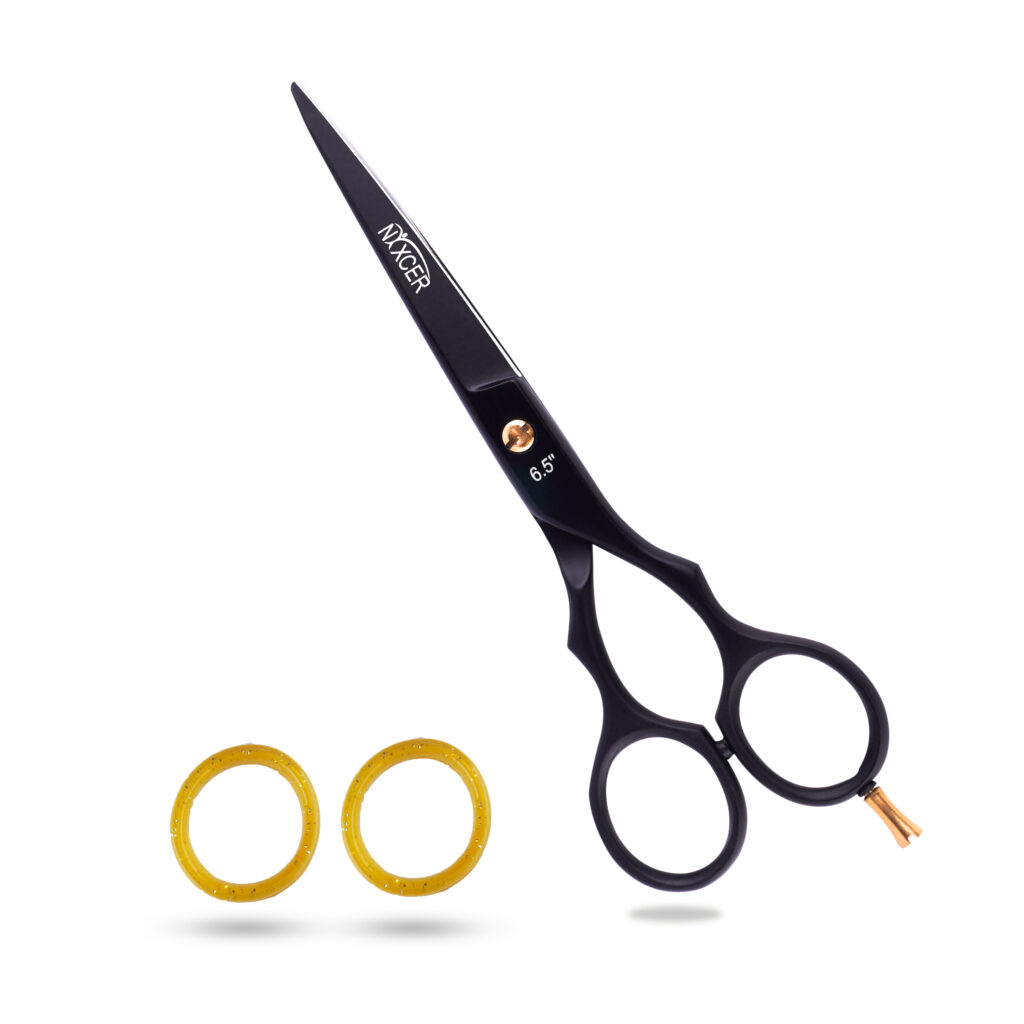When it comes to achieving the perfect haircut, the tools of the trade are paramount, and at the heart of this toolkit lies the hair cutting scissors. Unlike regular scissors, which are designed for general use, hair cutting scissors are meticulously crafted to meet the precise demands of hairstyling. These specialized tools are made from high quality materials, designed to deliver exceptional sharpness, durability, and comfort. Whether you are a professional hairstylist or someone looking to understand the nuances of hairstyling tools, recognizing the differences between hair cutting scissors and regular scissors is essential for ensuring clean, precise cuts and maintaining the health of the hair.
This blog post highlights the science behind hair cutting scissors apart, discussing their unique materials, design, and functionality.
Science Behind Hair Cutting Scissors: Ergonomics
The ergonomics of hair cutting scissors are specifically designed to provide comfort, reduce strain, and improve precision during extended use, which is essential for professional hairstylists. Here are the key ergonomic differences between hair cutting scissors and regular scissors:
1. Handle Design
Hair Cutting Scissors: Often feature offset or crane handle designs that allow for a more natural hand position.
Regular Scissors: Typically have symmetrical, straight handles that do not account for ergonomic positioning. This can lead to increased hand and wrist fatigue during prolonged use.
2. Finger Rest (Tang)
Hair Cutting Scissors: Usually equipped with a removable finger rest (tang) that provides additional support for the fingers. This helps to stabilize the hand and reduces strain on the thumb and fingers during cutting.
Regular Scissors: Generally lack a finger rest, offering less support and stability, which can lead to discomfort and reduced control over time.
3. Thumb Ring
Hair Cutting Scissors: Often have a larger, more ergonomic thumb ring that is slightly angled to reduce thumb fatigue and pressure.
Regular Scissors: Have a standard, circular thumb ring that does not offer the same level of ergonomic support, potentially causing discomfort and fatigue with extended use.
4. Weight and Balance
Hair Cutting Scissors: Balanced and lightweight to ensure ease of use and reduce hand fatigue. The balanced design helps distribute weight evenly, allowing for precise control and smooth cutting motions.
Regular Scissors: Often heavier and less balanced, making them more cumbersome to use for delicate tasks. The imbalance can lead to quicker hand fatigue and reduced accuracy.
5. Customization and Adjustability
Hair Cutting Scissors: Many professional hair cutting scissors come with adjustable tension systems, allowing stylists to customize the scissors to their preferred level of resistance. This customization enhances comfort and cutting efficiency.
Regular Scissors: Typically lack adjustable tension systems, providing a one size fits all approach that may not suit individual preferences and can lead to suboptimal performance.
6. Material and Finish
Hair Cutting Scissors: Often made with high quality materials that include ergonomic coatings or finishes, such as soft grips or nonslip textures, to enhance comfort and control.
Regular Scissors: Usually made from basic materials without specialized ergonomic finishes, resulting in less comfort and grip security during use.
Science Behind Hair Cutting Scissors: Ergonomics
The material of hair cutting scissors is specifically chosen to provide superior performance and durability compared to regular scissors. Here are the key differences:
1. Quality of Steel
Hair Cutting Scissors: Typically made from high quality stainless steel or Japanese steel. The most common types are 440C stainless steel, VG10, and ATS314. These steels are known for their hardness, sharpness, and ability to hold an edge for a long time. They also resist corrosion and rust, which is crucial for tools that may come into contact with moisture.
Regular Scissors: Often made from lower grade stainless steel or carbon steel. These materials are not as hard or durable as those used in hair cutting scissors and may dull quickly. They are also more prone to rust and corrosion if not properly cared for.
2. Hardness and Durability
Hair Cutting Scissors: The steel used in hair cutting scissors is hardened to a higher degree (usually around 5662 HRC on the Rockwell hardness scale). This high hardness allows the blades to remain sharp for longer periods and withstand frequent sharpening without losing their edge.
Regular Scissors: Typically have a lower hardness rating, meaning they become dull more quickly and may not perform as well over time. They are not designed for the frequent sharpening needed to maintain a razor sharp edge.
3. Precision and FineTuning
Hair Cutting Scissors: The manufacturing process for these scissors includes precise heat treatment and tempering, which enhances the steel’s properties. This allows for very fine, sharp edges that are necessary for clean cuts and intricate hair cutting techniques.
Regular Scissors: Generally, do not undergo the same level of precision in heat treatment and tempering, resulting in a less refined edge that is not suitable for delicate or precision cutting tasks.
4. Corrosion Resistance
Hair Cutting Scissors: The high quality steel used is often alloyed with elements like chromium, molybdenum, and vanadium, which provide excellent corrosion resistance. This is important in a salon environment where scissors may be exposed to moisture, hair products, and chemicals.
Regular Scissors: May lack these alloying elements, making them more susceptible to rust and corrosion over time, especially when exposed to moisture.
5. Special Coatings and Finishes
Hair Cutting Scissors: Some high end hair cutting scissors feature special coatings, such as titanium or other advanced coatings, to further enhance their performance, reduce friction, and improve longevity.
Regular Scissors: Generally, do not have such advanced coatings or finishes, as the cost is not justified for general purpose use.



